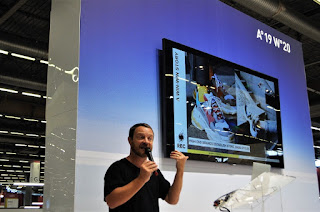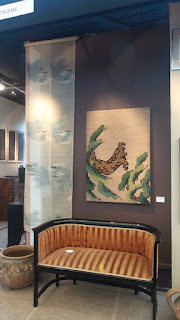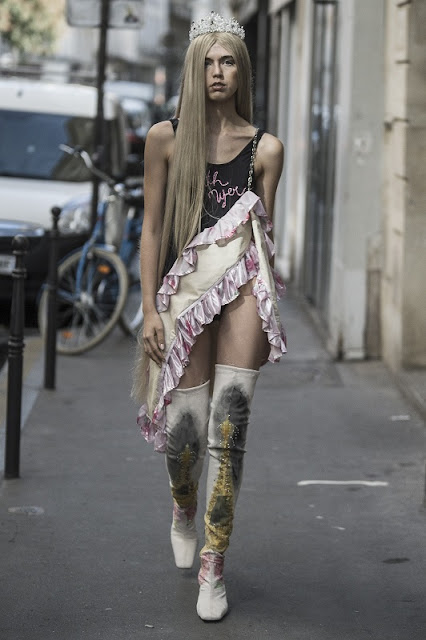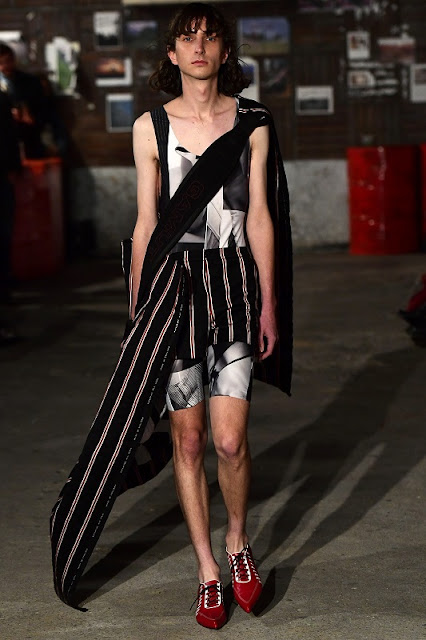At a glance some of the clothes look familiar, as something we already own, or what people wear in the street. Elsewhere, they are quirky and conceptual. That’s the beauty of these clothes from the
GAMUT collective which unites five fashion designers and friends, all graduates of
La Cambre (School of Art and Design) in
Belgium.
Their first collection, presented on 28 September 2018 at
La Station – Gare des Mines in
Paris, initiates a thoughtful dialogue between the respective universes and fields of expertise of its members.
A visit to the
www.collectifgamut.com site opens the door to an organic labyrinth that randomly produces collages, layers of images, confrontations of scales, themes and moods.
Here, you see photos of the clothing being manufactured, pictures of everyday life, taken in the street, at night, during the day, on the go or at home. Mixed with this raw material are shots of the first GAMUT collection, taken regularly each month during the process of their creation. Neither advertisements nor tools of seduction, these images are simply reflections of reality.
On a single silhouette, we can make out an interpretation of a traditional suit, invaded by technical elements and worn with GAMUT top-stitched cowboy boots and a travel bag crafted from recuperated scarves, which we also find on a ruffled skirt or trousers.
The personal visions of each member of the collective coexist and converse in a coherent wardrobe in which the suit is revisited in several forms, sometimes organic, sometimes conceptual, deconstructed, radical or meticulous…
Each member’s know-how is fully exploited to give life to an open wardrobe where the pieces navigate between men and women in a permanent movement that announces a new, spontaneous aesthetic in contrast with current trends.
The collage format also makes its mark on the collective’s choice of materials: traditional woollen cloth with tennis stripes, featured in the entire collection, comes head to head with technical waterproof canvas and jerseys printed with black and white photos of the striped suit cloth from the rest of the collection, worn on models.

On an oversized silhouette, the word GAMUT is splashed across dresses, tops and shorts. A line of knitwear in coloured cashmere, with the same construction principles as the rest of the collection, adds a radiant touch to the overall work.
Somewhere between quirkiness and realism, the GAMUT silhouettes juxtapose extremely rigorous and understated pieces with sparkling gloves or ultra-large visor caps.
Trained in the Belgian style, the members of GAMUT tweak the hallmarks of traditional clothing, from a man’s waistcoat to an evening gown, from a tailored coat to a white shirt, by way of a technical parka and a rustic wool jumper.
The collection is presented on a cast of models in line with the collective and La Station – Gare des Mines, which was covered in red plastic for the occasion.

This inclusive sample of today’s youth projects energetic and powerful attitudes that correspond to the ambition of GAMUT: to show a different reality, an original way of creating, a field of possibilities. And it works as one collective, cohesive collection.
GAMUT thanks the Antwerp brand Adult, which lent three shoe models for the runway show on 28 September 2018. The rest of the accessories (high and low cowboy boots, backpacks, travel bags, caps, belts) were developed by GAMUT.
Photos by Etienne Tordoir / Info: Autrement PR





















































